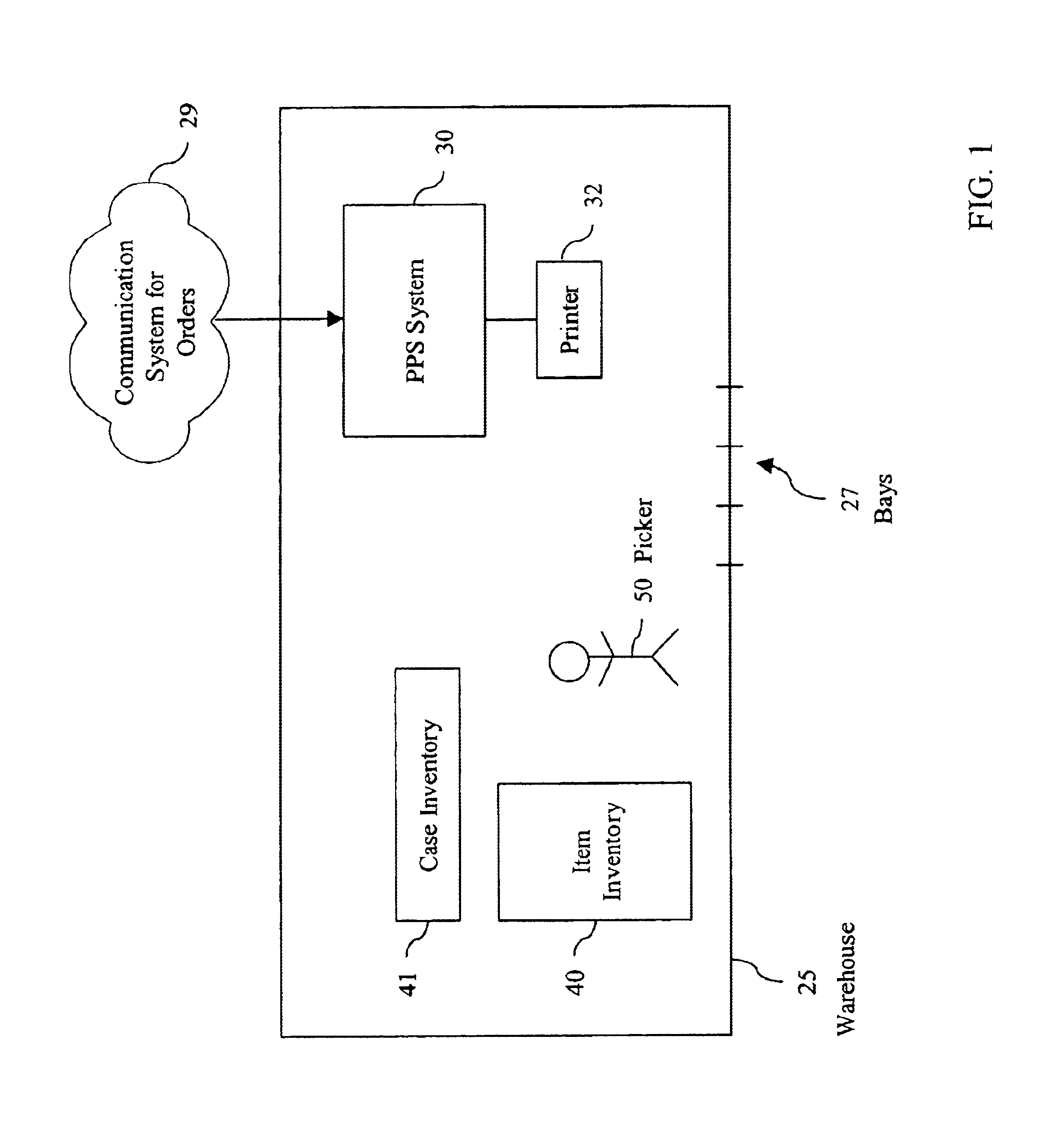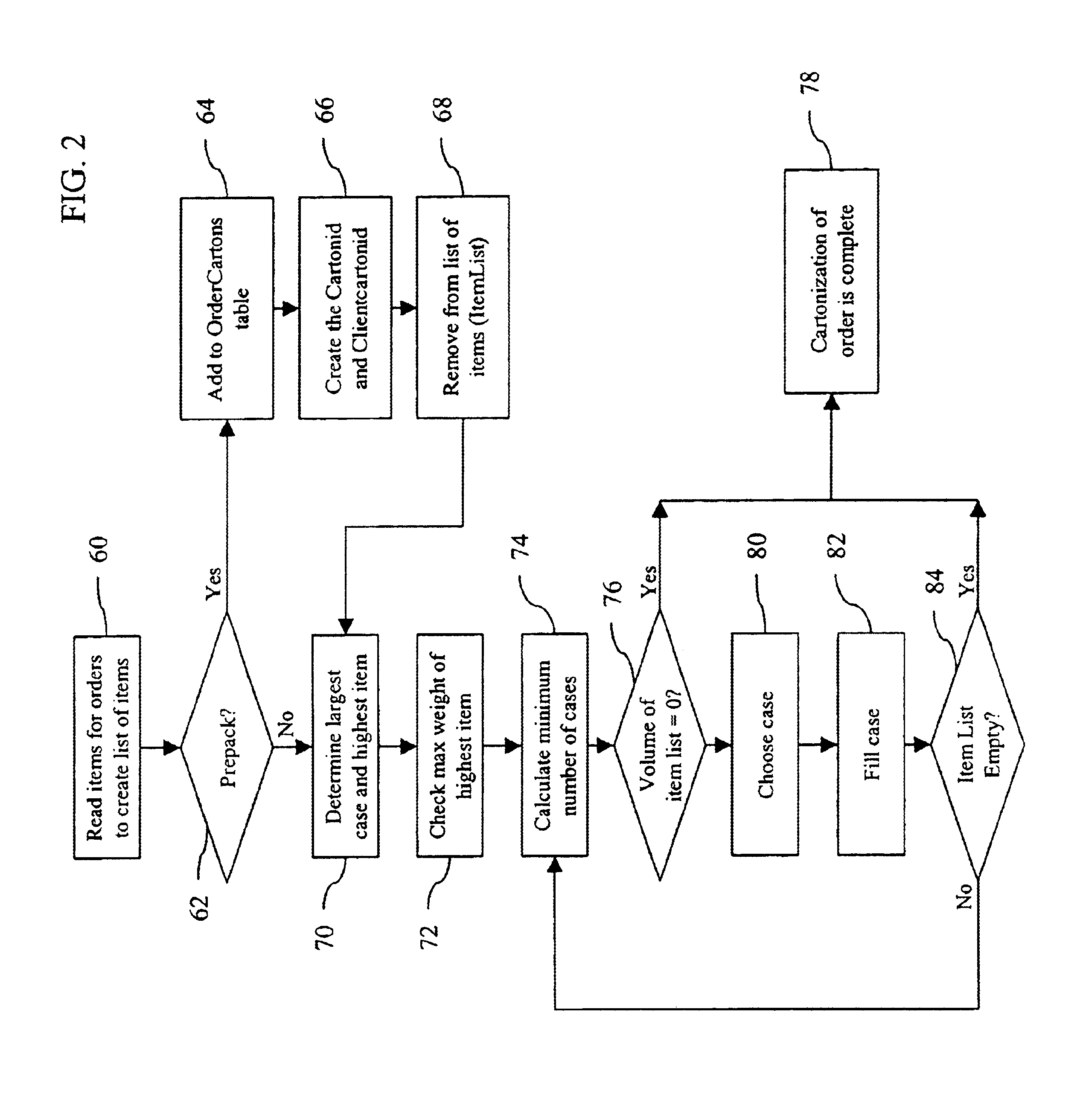Method and system of optimized sequencing and configuring of items for packing in a bounded region
a bounded region and item technology, applied in the direction of stacking articles, instruments, de-stacking articles, etc., can solve the problems of unfavorable material utilization optimization, unique and especially difficult problems, and the inability to optimize the utilization of materials, etc., to achieve cost savings, reduce waste, and reduce the use of larger or more boxes
- Summary
- Abstract
- Description
- Claims
- Application Information
AI Technical Summary
Benefits of technology
Problems solved by technology
Method used
Image
Examples
Embodiment Construction
Embodiments of the present invention include methods and systems of optimized sequencing and configuring of items to be packed in a bounded region. For example, the present invention provide methods and systems for optimization of the costs associated with order fulfillment in the PPS (pick, pack, and ship) industry. Embodiments include methods and systems that incorporate the three-dimensional pattern nesting algorithms to sequence and configure items to be picked, packed and shipped. In part, the present invention provides a method suited to the PPS industry for optimized sequencing and configuring of items to be picked, packed and shipped (referred to as a “cartonization routine”).
Referring to FIG. 1, a system embodying the present invention is shown. A warehouse 25 in which a PPS computer system 30 is housed is shown. The PPS system 30 is in communication with a communication system for orders 29, and receives orders and other communication from such system 29. The PPS computer ...
PUM
 Login to View More
Login to View More Abstract
Description
Claims
Application Information
 Login to View More
Login to View More - R&D
- Intellectual Property
- Life Sciences
- Materials
- Tech Scout
- Unparalleled Data Quality
- Higher Quality Content
- 60% Fewer Hallucinations
Browse by: Latest US Patents, China's latest patents, Technical Efficacy Thesaurus, Application Domain, Technology Topic, Popular Technical Reports.
© 2025 PatSnap. All rights reserved.Legal|Privacy policy|Modern Slavery Act Transparency Statement|Sitemap|About US| Contact US: help@patsnap.com



